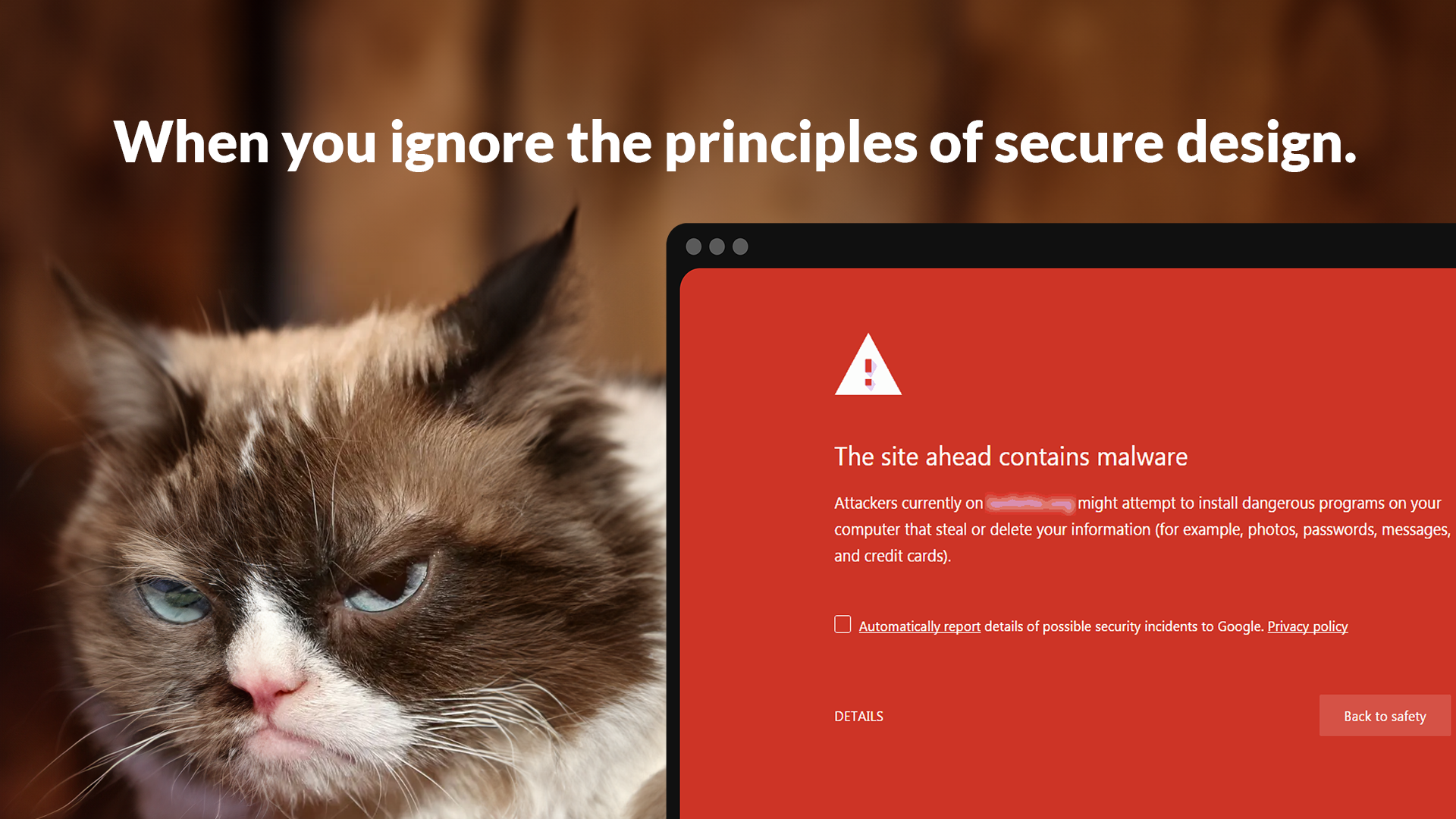In today’s rapid-fire development environments, security can often be a neglected afterthought. Applications that lack effective security controls are low hanging fruit for threat actors. Thus, it’s important to be aware of the inevitable byproduct of modern software development — security risks and vulnerabilities that can be released with the applications.
Companies need to take a sophisticated approach to security management at the earliest stages of SDLC. Otherwise, it would require much effort to alter the core decisions further down the line. A failure to properly assess business risk in the design phase leads to insufficient level of security, which makes your application susceptible to vulnerabilities termed as Insecure Design.
Understanding the current threat landscape is a good place to foster a secure development culture. In this blog post, we will take a deep dive into the details of insecure design vulnerability, possible impacts, and prevention methods.
What is Insecure Design?
Insecure design is a new add-on to the 2021 OWASP Top 10 family which debuts high on the list. Placed straight into the fourth place, it is an incredibly broad category that covers risks related to design and architectural flaws in web applications that bad actors can leverage.
Insecure design vulnerabilities result from non-adherence to security best practices during the design process. Today, it is one of the leading causes of functionality failures, data breaches, broken policies, and tarnished reputations.
The following category reflects the awareness that bringing development and testing together early at the system design stage can improve the quality, readability, and security of the code. This is the ultimate example of the “shift left” testing movement — less waste and more efficiency.
How can Threat Actors Leverage Flawed Design?
When considering the security of an application, design is often overlooked. If developers, QA engineers, and security teams fail to adopt the proper practices during the code design phase, the application becomes a safe target for malicious actors. Insecure design would allow attackers to:
- Bypass the authentication mechanisms used by a web application
- Modify certain URL parameters through unauthorized channels
- Access the systems to mine them for sensitive information
- Assume legitimate user accounts and gain unauthorized access to password-protected resources to exploit the system further
- Obtain access to any environment and further extend the scope of the attack to other environments
- Spoof a target system to overload servers and networks with multiple requests to crash them
- Send directed queries to extract information on system vulnerabilities that can foster an attack
- Takeover the account completely
- Execute other attacks such as cross-site scripting, SQL injection, LDAP injection, cross-site request forgery, and path transversal
Applications without secure design can result in potentially grave ramifications and immeasurable damage in terms of leaked data, ruined reputation, and hours of cleanup.
Examples of Insecure Design
The scenarios below illustrate how insecure design vulnerabilities could be exploited by bad actors to wreak havoc and ruin consumer trust:
- WordPress and the majority of other CMS platforms do not set limits for unsuccessful login attempts on the admin panel, which leaves them exposed to brute force attacks. In all likelihood, a hacker would attempt a large amount of combinations on a target. To mitigate and defend against these attacks, the installation of third-party security extensions would be required.
- A cinema chain offers discounts for group reservations with a deposit of up to fifteen people. Bad actors could take advantage of this defect and try to book all cinema seats at once in a few clicks. If a website permits large numbers of reservations to be made without requiring a deposit or credit card information, it will eventually face a massive loss of income.
- A considerable number of e-commerce websites lack defense systems against bots that scalpers use to purchase top-notch video cards. This provides a great opportunity for fraudsters to sell exhibits for a bigger price on auction websites, making it extremely difficult or even impossible for enthusiasts to obtain the cards at the recommended retail price.
The following examples show that having full observability into each aspect of security throughout the development lifecycle is paramount.
When it comes to security, there is no such thing as “set it and forget it”. Without secure designs, the applications are left vulnerable to cyber attacks and might not be able to withstand the worst-case scenario.
How to Detect and Fix Insecure Design?
Identifying weaknesses in the design phase is the most cost-effective place to curb the dangers at their root. Running automated tests or scans minimizes your application’s exposure to security vulnerabilities and reduces the likelihood of a successful attack.
Shifting left is made much easier with test automation. Testing is often performed before, during, and after the development process. IT specialists can use test automation tools to receive feedback regarding the stability of their product as early as possible.
Threat modeling
Adopting the perspective of malicious actors, threat modeling uncovers potential or actual malicious/incidental events, identifies security needs, assesses threat criticality, and prioritizes security improvements. It enables rational decision-making about how to deal with application security risks.
Penetration testing
With the right penetration testing tools in place, dev teams can establish agile and secure environments. Regular testing guarantees the quality of the product and also saves you the headache of time-consuming and costly fixes. The QAwerk team can help discover security gaps in the system defenses and mitigate vulnerabilities before a real-life hacker exploits them.
Thinking “like a hacker” allows you to identify the way they can infiltrate your application. With that knowledge in hand, you can implement all necessary measures to prevent the attack.
Scanning
Cutting-edge scanning tools allow companies to continuously assess and monitor their systems for the latest security threats. Security scans can help developers surface issues early on so they can be addressed and fixed before software release. It is one of the best ways to prioritize vulnerabilities for remediation, accounting for the type of attack, severity of the exposure, and level of access.
Since the number of cyber threats is increasing day after day, it’s crucial for engineers to comprehend that security is not the thing that can be compromised when speed is on the line. In order to deliver secure applications to market, developers have to be provided with the tools to conduct their work securely without impediments and any extra effort.
Insecure Design Prevention & Mitigation
It is often easy to get caught up in trying to provide functionality and making things work, that security is left as a checkbox item with little or no thought. The development process needs to include security at every step from design to implementation through deployment and maintenance.
Differentiated from other critical vulnerabilities, insecure designs can’t be fixed by a perfect implementation. They require security controls to mitigate the threats. IT specialists can take some steps to minimize the occurrence of these risks and protect against cyber attacks as best they can. The options to prevent insecure design include:
- Move from DevOps to DevSecOps
- Implement a detailed threat modeling for critical authentication, access control, business logic, and key flows to uncover potential threats that may impact your system
- Use secure development procedures
- Partner with AppSec professionals who can help evaluate design security and privacy-related controls
- Use a comprehensive standard library with secure design patterns and ready-to-use components
- Incorporate security language and controls into user stories
- Configure bot signatures so that your system distinguishes between benign and malicious bots and treats the traffic differently
- Implement the appropriate level of segregation at the system and secure communication layers
- Limit resource consumption by user or service
- Configure HTTP compliance so that the system performs validation checks on HTTP requests to ensure the requests are properly formatted
- Filter all output thoroughly
Secure design is all about prevention rather than “treatment”. If organizations embrace the highest coding standards and adopt security precautions in due course, this helps them prevent the risks and avoid costly mistakes.
This new #4 addition encourages dev teams to take security seriously and devote enough time to create new applications with simple, robust, and concise architectures.
Summing Up
As a system’s design dictates its development process, it is crucial for organizations to guarantee that design is as flawless and impervious to malicious attacks as possible. Indeed, an effective approach to IT security must be defensive to ensure that web security vulnerabilities never make it into the code.
The bottom line emerging from the fourth category of OWASP Top Ten list is that application threat modeling is no longer optional. By running threat models across the SDLC, organizations can determine potential threats early to weed out issues and minimize the possible damage.
Insecure design vulnerabilities can be avoided altogether by including diligently planned threat modeling, proactive vulnerability management, tried-and-true architectural patterns, and proper SDLC. Carrying out security testing can significantly increase the application’s inherent security.
Increase your web app security now: The ultimate insecure design cheat sheet


